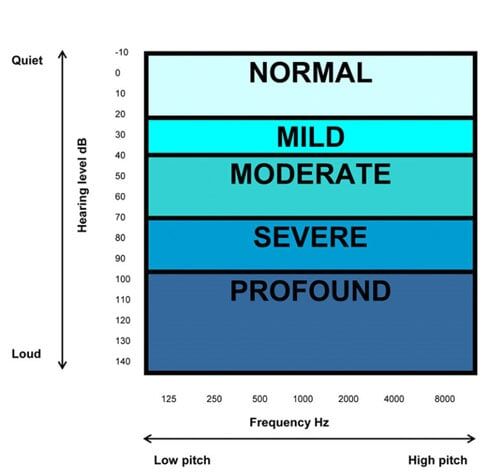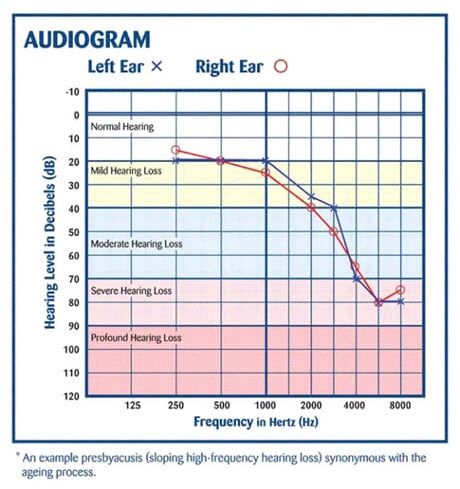Hearing Loss
Do You Suspect Hearing Loss?
In 90% of all cases, hearing loss occurs because the delicate hair cells in the inner ear are irreparably broken or do not otherwise function properly. This means that the brain does not receive all the sounds and frequencies it needs to provide a complete soundtrack. It is as though the high octave range keys on a piano were removed and attempting to play a well-know melody. Even though only eight keys are missing, the melody might be difficult to recognize and wouldn't sound right.
Types of Hearing Loss
Sensorineural
Sensorineural is by far the most common hearing loss. The condition refers to a problem in the the cochlea and/or the auditory nerve. This accounts for about 90% of permanent hearing losses. Sensorineural hearing losses are usually treated with hearing instruments.
Sensorineural is by far the most common hearing loss. The condition refers to a problem in the the cochlea and/or the auditory nerve. This accounts for about 90% of permanent hearing losses. Sensorineural hearing losses are usually treated with hearing instruments.
Conductive
Conductive hearing loss occurs when sounds are interrupted through the outer or middle ear. Most conductive losses can be treated medically, but there are times when hearing instruments are needed
Conductive hearing loss occurs when sounds are interrupted through the outer or middle ear. Most conductive losses can be treated medically, but there are times when hearing instruments are needed
Mixed
Mixed hearing loss occurs in the outer or middle ear. It is a combination of a conductive and sensorineural hearing loss. A mixed hearing loss can occur when a person has wax blocking the ear canal and a damaged cochlea. Mixed losses are treated with a combination of medical treatment and hearing instruments.
Mixed hearing loss occurs in the outer or middle ear. It is a combination of a conductive and sensorineural hearing loss. A mixed hearing loss can occur when a person has wax blocking the ear canal and a damaged cochlea. Mixed losses are treated with a combination of medical treatment and hearing instruments.


When testing is done with headphones, we call them 'air conduction thresholds' as the sound must travel through the air of the ear canal to be heard.
Alternatively, hearing can be tested using a bone conductor - a device that rests on the bone behind the ear (held in place by a metal band stretching over the top of the head). This bone conductor transmits sound vibrations through the bones of the skull directly to the cochlea. This process allows the hearing professional to test the hearing of the inner ear directly.
Right ear Sounds heard in the right ear are marked in red. When headphones are used (air conduction thresholds), they are marked with an O and when a bone conductor is used (bone conduction thresholds), they are marked with a [ or a triangle Δ.
Left ear Sounds heard in the left ear are marked in blue. When headphones are used (air conduction thresholds) they are marked with an X and when a bone conductor is used (bone conduction thresholds), they are marked with a ] or triangle Δ.
Looking at the audiogram below, we can see that sound at 2000 Hz would have to be 40 dB loud before it could be heard in the right ear (O), and about 37 dB for the left ear (X).
Right ear Sounds heard in the right ear are marked in red. When headphones are used (air conduction thresholds), they are marked with an O and when a bone conductor is used (bone conduction thresholds), they are marked with a [ or a triangle Δ.
Left ear Sounds heard in the left ear are marked in blue. When headphones are used (air conduction thresholds) they are marked with an X and when a bone conductor is used (bone conduction thresholds), they are marked with a ] or triangle Δ.
Looking at the audiogram below, we can see that sound at 2000 Hz would have to be 40 dB loud before it could be heard in the right ear (O), and about 37 dB for the left ear (X).
Contact an experienced member of the Hearing Essentials staff to learn more information about each type of hearing loss or to schedule your next evaluation.

